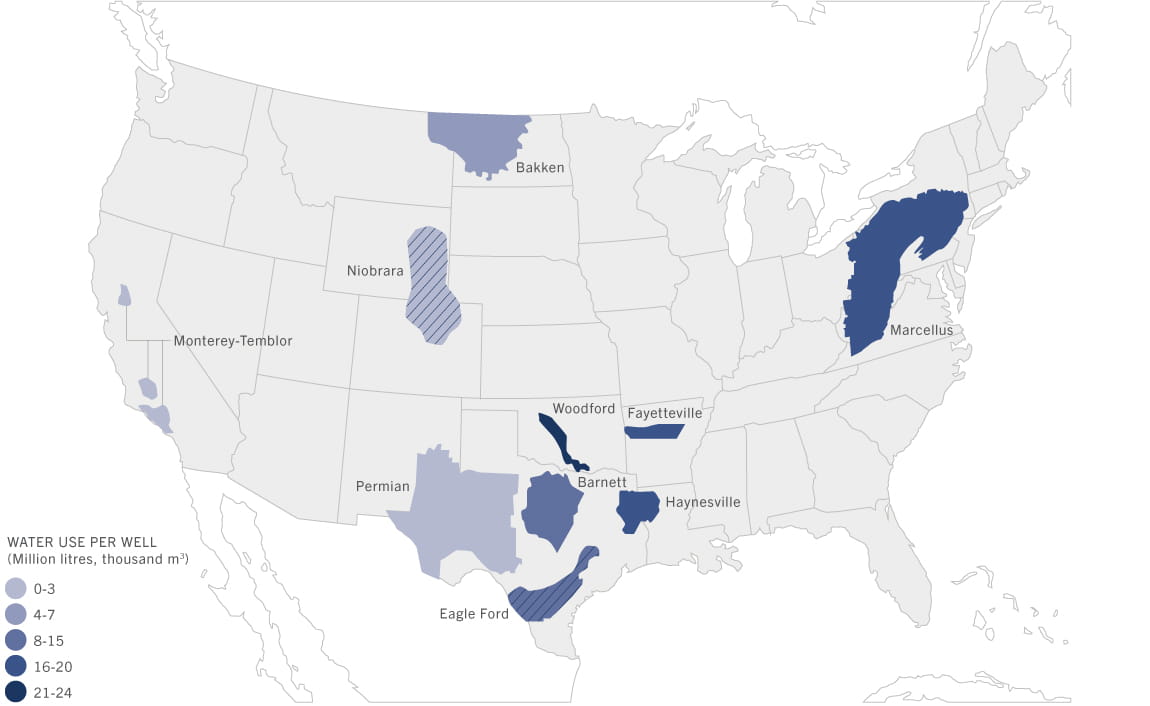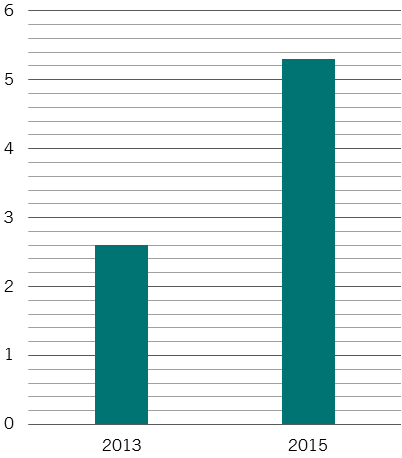Getting the flowback to flow back
Re-cycling water released from fracking is no easy task. Unrecognisable from its original state, the liquid that gushes up from shale wells is a cocktail of poisonous chemicals and radioactive matter – a mix of fracking fluid and the naturally-occurring compounds that leach out from rocks below ground.
Until recently, well operators have been reluctant to treat and re-use flowback, concerned that doing so would both increase operating costs and cut production. But under growing pressure from environmentalists and regulators, shale companies have begun introducing water recycling technologies into their production processes.
Broadly speaking, well operators can deal with wastewater in one of four ways.
The first is primary treatment. This is a catch-all term for techniques such as coagulation and disinfection that remove suspended solids, grease, oil and microbiological contaminants from wastewater, rendering the fluid clean enough for re-use in fracking. This is usually carried out on site.
Secondary treatment refers to a more complex set of chemical processes. These target the removal of ions, such as barium, calcium, magnesium, and strontium, often using lime. Treatment chemicals are added to wastewater to form particles that settle. The water is then decanted to remove contaminants, making for a cleaner fracking fluid.
Under growing pressure from environmentalists and regulators, shale companies have begun introducing water-recycling technologies into their production processes .
Tertiary treatment combines primary and secondary treatments with a form of thermal desalination to produce higher quality water for re-use in shale wells. The process removes both suspended and dissolved solids (known as total dissolved solids, or TDS) from the water.
The fourth option is the most complex and costly: recycling water for human use. This can be done in one of two ways. The first is high-temperature thermal distillation, extracting water from flowback by boiling it and re-condensing the steam. Where this is carried out, it is usually done offsite: wastewater is transported by lorry to a treatment plant. The process is costly because it’s energy intensive.
The second, cheaper, method is membrane filtration, through which water is forced through cell-like structures made of plastic composite. The membrane acts like a sieve: water molecules are small enough to pass through but larger ones – such as sodium, chloride and other TDS – are not. The membranes work best most at high pressures. An enhanced version of this process – vacuum multi-effect distillation – combines both distillation and membrane separation.


